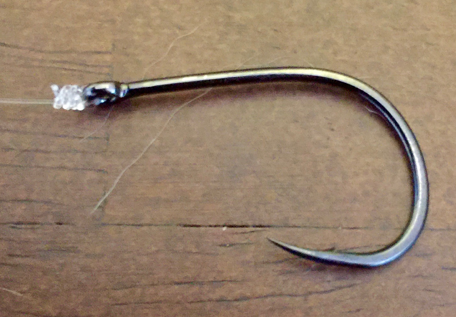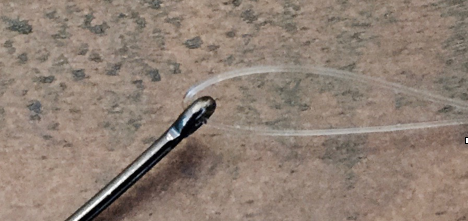Three approaches
In general, there are three approaches to connecting the hook. First, we can cinch the knot down to the eye of the hook – the leader is thus in firm contact with the fly. Secondly, we can have the hook lose in a loop, that can be fashioned in many ways – the hook is thus free and the belief is that it will lead to a more “natural” movement of the fly. Thirdly we can thread the leader through the eye and tie it to the shank of the hook (a snelled hook) – this is a good method for hooks used with tubes.
If we choose to cinch the knot onto the hook eye.

Knot cinched down
- The Uni knot is simple to tie strong and reliable.
- The Improved Clinch knot is probably the most widely used knot in trout fishing. Simple to tie and reliable for tippet less than 15 pounds’ test. I do not use it for heavier tippet.
If we choose to leave the fly loose in a loop (in the belief it will move better) then we can use:

Hook in a loop
- The Non-slip loop knot is simple to tie and strong.
- The Surgeon’s loop is very simple to tie and strong.
If we choose to Snell the hook

Snelled hook – great for tubes
- Snell knot is useful for tube hooks.
You have been wondering if captain Baz’s knots would hold. You will find out here.

